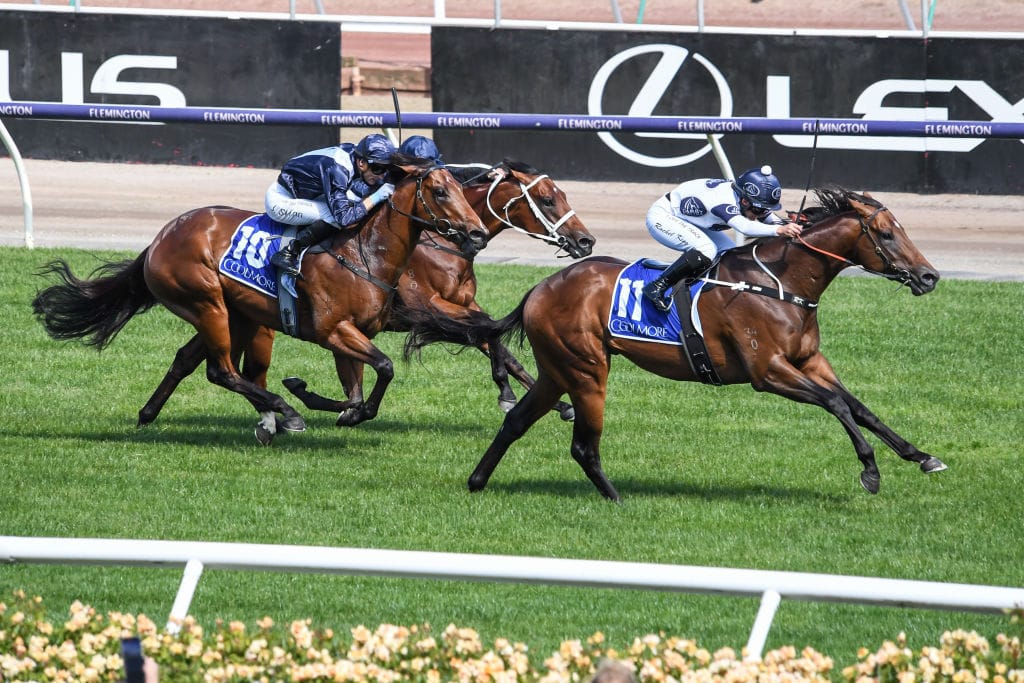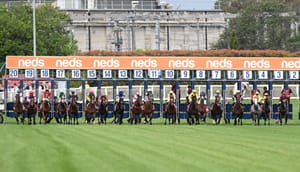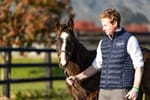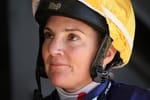The major three-year-old races in Australia each spring unearth not only the future stars of the turf, but also stallion prospects worth tens of millions of dollars.
Bren O’Brien chats to one of Australia’s most experienced and respected bloodstock figures, Duncan Grimley, about the three-year-old colts to emerge as the leading stallion prospects from the just completed spring, and the intricacies of their current or prospective stallion deals.
Bren O’Brien: Duncan, let’s start out with the Coolmore Stud Stakes, and the winner of that race Ozzmosis. That race has become the preeminent source for elite stallion prospects hasn’t it?
Duncan Grimley: It certainly has and he’s now got a future stallion career because he has won that race. To have already stated your stallion credentials before the Coolmore, you would have had to be a very good two-year-old or have won the Golden Rose.
Merchant Navy is a perfect example of the importance of the Coolmore. He was a good two-year-old, who then had a shot at a Golden Rose and was found wanting over the distance, but was able to come back and win a Coolmore. All of a sudden, he’s a multi-million-dollar stallion prospect.
BO’B: Ozzmosis is an interesting one from a ‘stallion-making’ perspective. Newgate bought into him ahead of his three-year-old campaign before he became a Group 1 winner. How would a deal like that come about, Duncan?
DG: How a horse like him would be identified would be by winning a good enough race, but not a ‘stallion maker’ as a two-year old. He gets on the radar that way. He won a couple of races outside the carnival and they were in a manner which put him up on the radar as an exceptional two-year-old. That win may give him a rating that puts him on the level of say those lead-up races to a Golden Slipper.
A deal is then structured on what the fair value of the horse would be at that moment. Then there would be ‘kickers’ put in place. Basically, if you win a certain race or races, then there is an extra payment along the way for the original owners. That would go up to a top price.
The top race for a three-year-old would be the race he won, the Coolmore, so the price that would have been paid would have given those owners their best result in terms of an overall purchase price. The kicker paid comes down to the quality of the race, or races he won subsequent to his purchase.
OZZMOSIS gets a Group 1 win in a breathtaking edition of the Coolmore Stud Stakes, making his mark as a top class sprinter #DerbyDay
— Victoria Racing Club (@FlemingtonVRC) November 4, 2023
📽 @10SportAU pic.twitter.com/7LkL3s7M2q
BO’B: We are talking many multiples of the original purchase price here? It’s a significant amount isn’t it?
DG: Yes, that would be the case. The figure that is eventually paid, however, would be less than what the farm would have paid had they waited to get in on him after he won the Coolmore. I’m not familiar with the specifics of the Ozzmosis situation, but in some cases, you can’t buy all of the horse. If you look at a horse like Stay Inside, there are a few initial owners in that horse, who are still involved with him in terms of his stallion career. It may be the case, not everybody wants to sell out when they retire to stud.
B’OB: I guess even if a farm gets in for 10 per cent of a horse like this, then they can scare opposition farms away. It appears that we are seeing more and more of those types of deals.
DG: Well, the farms have to do this to get the horses. Let’s look at this year’s current crop of three-year-old colts. A horse like Cylinder, he’s already locked up in Darley, as is a colt like Tom Kitten. Shinzo, the Slipper winner, is already owned by Coolmore, while Newgate themselves have Militarize.
So the actual pool of current three-year-olds who would go at the high commercial end of a service fee, there aren’t that many of them left, you are probably down to the Caulfield Guineas winner Griff. There are still plenty of studs out there who don’t have a colt ready to go to stud next year.
BO’B: I guess what that tells us is that if Newgate hadn't purchased into Ozzmosis, it would have been a very competitive race for his services right now.
DG: Yes. Let’s say a horse like I Am Unstoppable had beaten Ozzmosis in the Coolmore. You’d have all the major studs in the land chasing him. Newgate would have been on him, Arrowfield, Widden, Yulong, possibly Yarraman Park and Vinery. You would have a plethora of people willing to have a go.
BO’B: Looking at Militarize, obviously the other stallion-focused three-year-old race of the spring was the Golden Rose. He‘s a dual Group 1-winning two-year-old, added another banner success at three and is already owned by Newgate. But we saw Arrowfield come in to his ownership after that Golden Rose win, looking to send mares to him.
DG: You don’t see a deal like that that often, when two major studs come together, but I suppose from Arrowfield’s point of view, he’s a son of Dundeel and that’s an advantage to them or something they were interested in. Clearly there was an opportunity there with a shareholder willing to sell out and the other shareholders were willing to have Arrowfield in.
I know it has happened before, particularly in New Zealand, and even in Victoria and South Australia between big stallion entities, but I don’t recall it happening in the Hunter Valley in recent history.
BO’B: From the perspective of a shareholder in Militarize, I suppose that access to those quality Arrowfield broodmares could only be a positive for the stallion as well.
DG: I think that’s right. Arrowfield have clearly been looking for a horse of that profile and if you can’t have all of him, you might as well have some of him.
Joao 'Magic Man' Moreira produces an inch-perfect ride on Militarize to win the Golden Rose for @cwallerracing! 🙌 pic.twitter.com/s3N9su9HYt
— TAB (@tabcomau) September 23, 2023
BO’B: The Caulfield Guineas has been the pathway for many stallions. This year’s winner, Griff, is an interesting one, because he came a little bit from left field and is from the first crop of his sire, Trapeze Artist. Would we expect there to already be strong discussions about his future home at stud?
DG: There’s definitely interest in him, because of what I said earlier about the fact he is one of the few that haven’t already been signed up. The Caulfield Guineas is a stallion-making race because you get to be a stallion, but in the last 25 years, excepting horses like Redoute’s Choice and Lonhro, there are no champion stallions out of the race.
There’s no doubt Griff should get a home. Where that is, we’ll have to see. It could be Victoria or New South Wales. Being by Trapeze Artist, you would think Widden would be interested.
BO’B: As an owner of a horse like him, would you be better in seeking a deal now, or waiting until the autumn?
DG: I was asked a question a while ago when I was working with John Singleton, if we had a Golden Slipper winner, what would we have done? I said I wouldn’t have left the track until I had the stallion deal done. That would be my view. The closer you can do the deal to the horse crossing the line, the better that deal will be.
That horse could come back and win an Australian Guineas or a Randwick Guineas, but I doubt he would be worth anything more. The prizemoney is not insignificant in those races, but in terms of his stallion value, it's unlikely it would be any higher than what it was as soon as he crossed the line in the Caulfield Guineas.
GRIFF WINS THE CAULFIELD GUINEAS! 🏆@cmaherracing @BMelham pic.twitter.com/UVTxbQIdvL
— 7HorseRacing 🐎 (@7horseracing) October 14, 2023






